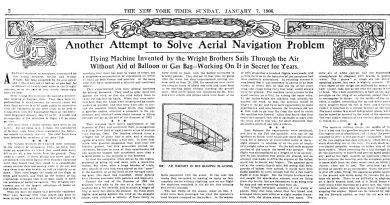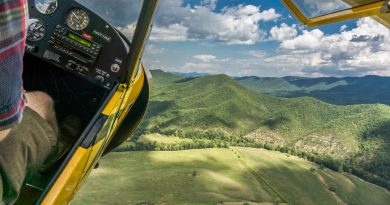From Icarus to the ISS: The Evolution of Our Flight Obsession
Humanity’s fascination with flight is rooted in a combination of natural curiosity, the desire to explore new horizons, and the allure of mastering a domain that was once considered unreachable. From the earliest myths and legends about Icarus and his wax wings, to the intricate drawings of flying machines by Leonardo da Vinci, the concept of flight has always sparked imagination and wonder.
This fascination is fueled by the desire to break free from the physical limitations of our human bodies. Flight represents freedom, the ability to transcend boundaries, and the opportunity to view the world from a new perspective. It symbolizes the human spirit’s unyielding quest for innovation and progress.
Moreover, the mastery of flight has had practical and profound implications. It transformed travel, enabling us to connect with distant lands and cultures rapidly, which in turn fostered global interconnectedness and understanding. The achievement of human flight, culminating in space exploration, stands as a testament to our capacity for scientific and technological advancement.
In essence, flight captures our collective aspiration to rise above challenges, to innovate, and to explore the unknown. It reflects a deep-rooted yearning for freedom and discovery, making it a timeless and universal fascination.
Historical Events And Figures
Humanity’s fascination with flight has been shaped by a tapestry of historical events and figures, each contributing to the collective dream of conquering the skies.
One of the earliest and most influential figures in this journey was Leonardo da Vinci. His detailed sketches and designs of flying machines in the 15th century, although never realized in his lifetime, showcased an extraordinary vision and understanding of aerodynamics. Da Vinci’s work ignited imaginations, proving that the concept of human flight wasn’t just fantasy but a potential scientific pursuit.
Fast forward to the 18th century, the Montgolfier brothers’ successful hot air balloon flights marked a significant milestone. These flights demonstrated that humans could safely ascend to and maneuver in the sky, transforming flight from mere theory to tangible reality.
However, it was the Wright brothers, Orville and Wilbur, who fundamentally altered the course of aviation history. Their successful powered flight in 1903 at Kitty Hawk, North Carolina, is a seminal event. This achievement didn’t just prove that heavier-than-air flight was possible; it opened the door to the future of aviation, leading to rapid advancements in aircraft design and technology.
Other notable figures include Amelia Earhart, whose daring flights and tragic disappearance captured the public’s imagination, symbolizing the spirit of adventure and the risks associated with early aviation. Charles Lindbergh’s solo transatlantic flight in 1927 also stands out, showing the world the potential for long-distance air travel and bringing aviation into the mainstream consciousness.
Each of these milestones and individuals played a crucial role in shaping humanity’s fascination with flight, turning it from a dream into a reality that continues to evolve and inspire to this day.
Influence On Human Culture, Art, And Literature
The concept of flight has been a profound influence on human culture, art, and literature, serving as a rich source of inspiration and symbolism. This fascination is deeply rooted in our collective psyche, reflecting humanity’s aspirations, creativity, and boundless imagination.
In mythology and early literature, flight often symbolized freedom, transcendence, and the divine. Myths like that of Icarus and Daedalus from Greek mythology, or the ancient tales of flying carpets in Middle Eastern folklore, capture the human yearning to break free from earthly constraints. These stories conveyed both the allure and the peril of defying natural limits, embedding the idea of flight as a metaphor for ambition, risk, and the quest for knowledge.
The advent of real flight in the 20th century, through balloons, airplanes, and eventually space travel, further enriched cultural expressions. In art, the imagery of flight began to represent modernity, speed, and the breaking of traditional boundaries. Avant-garde artists used flight to symbolize the rapid technological and societal changes of the era.
In literature, the theme of flight took on new dimensions. Authors used it to explore topics ranging from the thrill of adventure and exploration to the existential reflections on humanity’s place in the universe. The ability to fly, whether through magical means in fantasy or through technology in science fiction, allowed characters and narratives to transcend the ordinary, opening up endless possibilities for storytelling.
Flight has also permeated popular culture through comics and films, where superheroes and futuristic vehicles captured the imagination of generations. The power of flight, often depicted as the ultimate expression of freedom and strength, became a staple element in these genres.
Overall, the concept of flight has been a catalyst for human creativity, offering a lens through which we view our highest aspirations and deepest desires. It continues to inspire a sense of wonder and exploration, reflecting our ongoing journey to understand and transcend our limitations.
The Role Of Jetpacks
Jetpacks, while still in the realm of emerging technology and not yet widely used for mainstream transportation or exploration, represent a fascinating aspect of humanity’s pursuit of flight. They embody the perennial dream of individual, unencumbered flight – a dream that has captivated imaginations for centuries.
In terms of exploration and discovery, jetpacks offer several unique advantages. They allow for personal, low-altitude flight, providing access to areas that are difficult or impossible to reach by traditional means. This could be invaluable in various fields such as search and rescue operations, where reaching remote or hazardous locations quickly is crucial. Jetpacks could enable rescuers to navigate rugged terrains or disaster zones more effectively than on foot or by vehicle.
In scientific research, jetpacks have potential applications in environmental monitoring and geographic exploration. Scientists could use them to study hard-to-reach natural environments, like dense forests or volcanic areas, gaining new perspectives and collecting data that might be challenging to obtain through other methods.
In the realm of space exploration, concepts akin to jetpacks, like personal maneuvering units, have already been used by astronauts to move around in the zero-gravity environment of space. These units allow astronauts to undertake extravehicular activities (spacewalks), contributing significantly to space station maintenance, repair, and scientific experimentation.
On the technological front, the development of jetpacks pushes the boundaries of engineering and aerodynamics, contributing to broader advances in aviation technology. The challenges of making jetpacks safe, reliable, and efficient drive innovation in areas such as propulsion systems, lightweight materials, and flight control mechanisms.
However, it’s important to note that the practical use of jetpacks for exploration and discovery is still largely aspirational. Current models have limitations in terms of flight duration, safety, and cost, making them more suitable for demonstration and recreational purposes than for practical applications in exploration and discovery. As the technology evolves, it could eventually play a more significant role in these areas.
In the cultural and psychological sense, jetpacks continue to fuel the human imagination and our collective desire for personal flight, symbolizing freedom, innovation, and the endless pursuit of pushing beyond our limits.
The Future Generations
Children’s early exposure to the idea of flight can have a profound influence on their perception of the world and their sense of possibilities. This exposure often comes through various mediums such as stories, movies, toys, and real-world experiences like watching birds or airplanes.
Firstly, the concept of flight can stimulate a child’s imagination and creativity. Children often fantasize about flying, whether it’s through pretend play or daydreaming. This kind of imaginative play is crucial for cognitive development, encouraging problem-solving skills, and fostering creativity.
Exposure to flight also helps children understand and accept the concept of exploration and discovery. It teaches them that there are vast and diverse realms to explore beyond their immediate environment. This understanding can inspire curiosity about different places, cultures, and even outer space, nurturing a sense of wonder and a desire for learning.
Moreover, learning about flight and its history exposes children to the ideas of innovation and perseverance. Stories of aviation pioneers and astronauts, for instance, illustrate that challenges can be overcome with dedication and creativity. This can be empowering for children, instilling a belief in their ability to overcome obstacles and achieve their goals.
Flight also introduces children to basic scientific concepts like gravity, aerodynamics, and space science. This early exposure can spark an interest in science, technology, engineering, and mathematics (STEM) fields, laying the foundation for future educational pursuits and careers in these areas.
On a broader level, the idea of flight can influence children’s understanding of freedom and independence. The ability to fly, even in their imagination, allows them to envision themselves breaking free from limitations, both physical and metaphorical. This can foster a mindset of independence and self-efficacy.
Lastly, in a world increasingly connected by air travel, understanding flight helps children grasp the concept of global interconnectedness. It aids in their comprehension of how people can travel and communicate across great distances, promoting a more global perspective.
In essence, early exposure to the concept of flight can enrich a child’s development in myriad ways, from sparking their imagination and curiosity to shaping their understanding of science, innovation, and the interconnected nature of our world.
Conclusion
Humanity’s fascination with flight and the allure of jetpacks reflect a deep-seated desire to transcend our physical limitations and explore the unknown. This fascination is rooted in a fundamental aspect of the human spirit: the pursuit of freedom, innovation, and the expansion of our boundaries.
The idea of flight, from the earliest myths to modern aviation, has always represented the pinnacle of human ambition and creativity. It symbolizes our capacity to defy gravity, one of the most fundamental forces of nature, and to view our world from a new perspective. This desire to rise above the ground reflects not just a physical aspiration but also a metaphorical one, signifying our quest to overcome challenges and reach new heights in various aspects of life.
Jetpacks, in particular, embody the ultimate dream of individual flight. They are a manifestation of our desire for personal freedom and autonomy. The image of a person soaring through the skies with a jetpack taps into a primal yearning for unbridled exploration and independence. It represents a future where the constraints of traditional transportation are no longer binding, and the sky becomes a personal playground.
Moreover, the ongoing development of jetpack technology highlights our relentless drive for technological advancement. It showcases our willingness to push the boundaries of what’s possible, driven by a combination of curiosity, ingenuity, and the desire to break new ground. The challenges involved in creating safe and practical jetpacks also spur innovation in various fields, from materials science to aerodynamics.
Culturally, the fascination with flight and jetpacks speaks to a broader narrative of human progress and the never-ending story of exploration. Just as we once looked to the seas and stars with a mixture of awe and curiosity, we now look to the skies and beyond, imagining new ways to journey through them.
In conclusion, humanity’s fascination with flight, and by extension jetpacks, is more than just about the physical act of flying. It is a reflection of our innate desire to explore, to innovate, and to dream of a world where our physical and metaphorical boundaries are constantly pushed and redefined.



